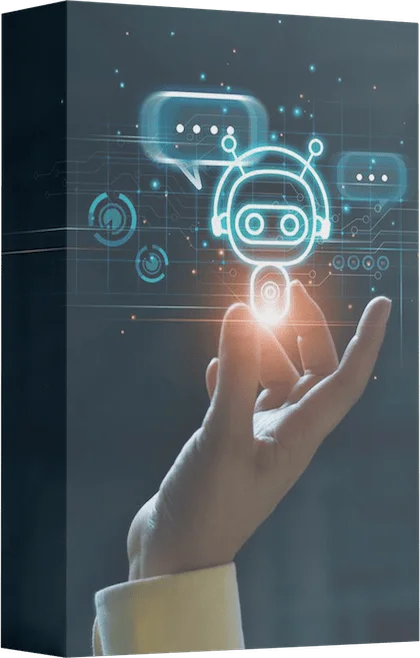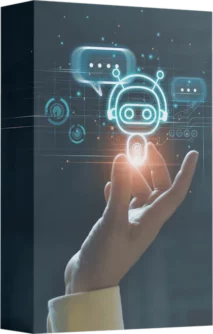Get Your Own Bard Clone Chatbot Today! | Building a Google Bard AI Clone Chatbot
Making a Bard clone means using APIs to get the right data and features from the real platform. This helps the clone copy all the cool stuff the original Bard can do.
To make sure the clone works just like Bard, we need to write careful code for things like showing shows, chatting, and making user pages. It’s important to pay attention to detail!
Adding a bot feature can make users like the clone more and make talking easier. And adding links to other stuff can make it even better.
Making a Bard clone needs careful coding to make it work well and be easy for users. You can start making your own Bard AI chatbot with Bard AI Google.
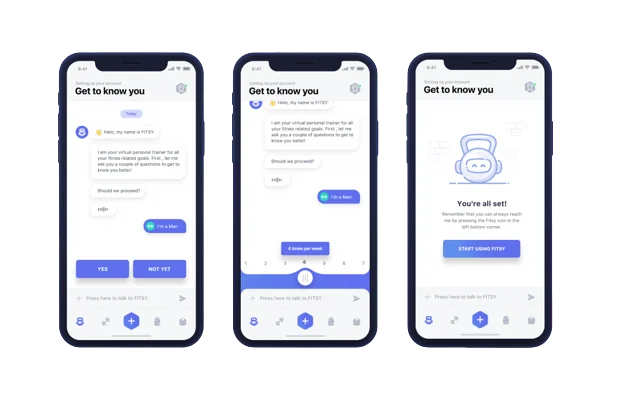
What is the Google Bard AI Clone Chatbot?
The Google Bard AI Clone Chatbot is like a super-smart talking robot made by Google. You can think of it as a really clever computer program that’s designed to chat with people.
It can understand what you’re saying and respond to you just like a person would. It’s a bit like having a virtual friend who’s always ready to talk and help you out!
Overview of the Google Bard AI Clone Chatbot
The Google Bard AI Clone Chatbot, also known as the Bard Clone, is a smart chatbot that runs on artificial intelligence. It’s made to talk with people like a real person, understanding what they say and deliver them helpful answers.
The Bard Clone uses advanced language models and powerful AI to make its conversations feel just like chatting with a human.
The Bard Google Chatbot is a smart mix of technology and literature. It talks like Shakespeare and lets you have fun conversations. It’s a cool way to experience old stories with new technology.
The Bard Google Chatbot is a clever tool that can answer questions, share ideas, and even write poetry or stories in the style of Shakespeare.
It lets users explore the world of Shakespeare’s literature without needing to go anywhere else. If you’re struggling with a play, need writing tips, or just love Shakespeare, this chatbot gives you something unique.
Powered by Google’s advanced AI, the Bard Google Chatbot makes learning about culture and storytelling more enjoyable online.
If you like books, Shakespeare, or just old stories, this chatbot lets you talk with one of the best writers ever!
How Does the Bard Clone Differ from Google Bard?
The Bard Clone and Google’s Bard are similar in some ways but have differences too. Various applications use them differently.
While Google’s Bard is made by Google, the Bard Clone is a separate thing. They might have different features or ways they work, but both aim to help you chat better.
Key Features of the Bard Clone
The Bard Clone has some cool features! It’s great for doing specific things, like answering questions or chatting. You can use it on your phone because it works on mobile devices.
Plus, it’s awesome because you can access it anytime, anywhere!
How to Create a Google Bard AI Clone Chatbot Using Python?
Creating a Google Bard AI Clone Chatbot using Python is pretty cool! You can use cutting-edge AI technologies and make it really smart.
With Python, you can leverage these advanced tools to teach your chatbot how to talk like a pro. It’s a fun and rewarding project where you can bring your own ideas to life!
Using Python to Build the Bard Clone
Building the Bard Clone with Python is a great idea. Python is an ideal programming language for making chatbots because it’s easy to learn and use.
With Python, you can create chatbots that talk like real people. Plus, there are lots of helpful tools and libraries available to make the process even easier.
So, if you want to make a chatbot like Bard, Python is the way to go!
Integrating AI and ChatGPT into the Bard Clone
Making the Bard Clone even better by adding AI and ChatGPT can change how it works. This can make conversations with the Bard Clone more interesting and helpful.
With these upgrades, the Bard Clone will be able to understand what users want and find information quickly.
This will revolutionize the way people interact with the Bard Clone, making it more conversational and useful based on user needs.
Accessing Data and Content for the Bard Clone
Another crucial aspect of creating the Bard Clone is accessing relevant data and content to enrich its knowledge base. This may involve sourcing transcripts, text data, or other resources to enhance the chatbot’s understanding and capabilities.
What are the APIs and Tools Needed to Build a Bard Clone?
To build a Bard Clone, you’ll need some tools and APIs. These are like special helpers for your development journey. You can use tools like Python, which is a programming language, to write the code for your chatbot.
Then, you’ll need APIs, which are like shortcuts to access specific features or data. With the right tools and APIs, you can bring your Bard Clone to life!
APIs for Generating AI Chatbot Responses
Using special APIs made for AI-powered chatbot helps make the Bard Clone better at chatting. These APIs give the chatbot access to a big library of knowledge, so it can give smart and accurate answers.
Using ChatGPT for Building the Bard Clone
You can make the Bard Clone using ChatGPT. It’s simple and easy to use. With ChatGPT, you can create a smart Bard Clone that talks like a human.
Just feed ChatGPT some information, and it will learn how to chat like the Bard Clone. This way, you can have your very own smart chatting buddy for any project you want.
So, using ChatGPT to build the Bard Clone is a great way to make a smart talking AI.
Integrating YouTube and Other APIs for the Bard Clone
To make the Bard Clone even better, we can connect it with YouTube and other APIs. This means the Bard Clone can use YouTube and other cool tools to do more things.
For example, it can show videos or get information from YouTube. Connecting with other APIs opens up lots of possibilities to make the Bard Clone smarter and more helpful.
So, by integrating YouTube and other APIs, we can make the Bard Clone even cooler and more useful for you.
Solution Demo -> Click Here
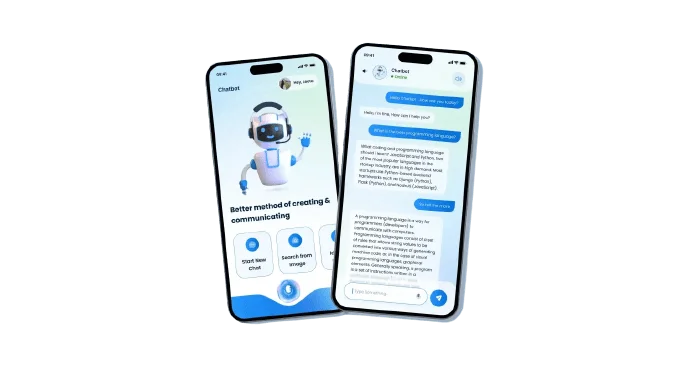
How to Integrate the Bard Clone with a Web Application?
Integrating the Bard Clone with a web application in a specific format allows for a smooth and interactive experience for the user.
Using Python to Integrate the Bard Clone with a Web App
You can use Python to connect the Bard Clone to your web app. Python makes it easy because of its flexibility and efficiency.
With Python, you can make the Bard Clone work together with your web app smoothly. This way, you can access all the features of the Bard Clone within your web app.
Plus, Python has many tools that already exist to help you with this task.
So, integrating the Bard Clone with your web app using Python is a great idea for seamless communication and analysis.
Providing Access to Creative Learning Through the Bard Clone
The Bard Clone opens doors to fun and creative learning opportunities for everyone. With its AI capabilities, it can help you learn in new and exciting ways. You can easily access it to explore different topics and ideas.
Plus, it can replicate how you learn in a really cool manner. Whether you’re into art, writing, or anything else, the Bard Clone can help you accomplish your goals with ease. It’s all about making learning fun and efficient!
So, why not give it a try and see what awesome creative outputs you can come up with?
Interacting with Users via the Bard Clone Technology
The Bard Clone’s seamless integration with web applications allows users to interact with the chatbot technology, seek information, and engage in meaningful conversations, enhancing their overall user experience.
Common Challenges and Solutions When Building the Bard Clone
Despite its potential, building the Bard Clone presents certain challenges that necessitate effective solutions to ensure its optimal functionality in a specific format.
Dealing with Specific Natural Language Prompts
One common challenge is handling specific natural language prompts in an efficient way, to ensure that the chatbot understands and notes accurate responses to diverse user queries.
Handling Errors and Access Restrictions
Developers must take note of potential errors and access restrictions that could arise during the Bard Clone’s operation, securing its efficient and error-free performance.
Key Considerations for Integrating the Bard Clone with Other Applications
Integrating the Bard Clone with other apps is important for making things work smoothly. This chatbot, made by Google, can change how things get done. Its smart AI powers help it understand and do things better.
By connecting it with other apps, like ones for analyzing data or being creative, you can make tasks easier and quicker. The Bard Clone’s ability to get information and do tasks can be really helpful in many areas.
So, by putting it together with other apps, you can make your work more efficient and get better results.
Deep Dive Into Bard Clone App
In recent years, AI has made amazing progress, especially with big companies like Google AI and OpenAI leading the way. People use these advanced technologies in many industries, from healthcare to finance, to change how tasks are done.
A new exciting thing is the knowledge doctor, an AI helper designed to give personalized help and info. It can understand complex topics by analyzing lots of data in real-time.
You can talk to the knowledge doctor on a website or computer app. Just ask questions or explain what you need, and the AI helper will use its smart computer tricks to give you good answers and suggestions.
One great thing about the knowledge doctor is that it’s open-source, so developers can customize it to their needs.
Elevate your business communication with Miracuves’ Bard Google Chatbot Script!
This script is easy to use, lets you change things the way you want. It helps you start your own version of Bard without any hassle.
Whether you’re a small startup or a big company, our script can revolutionize your communication strategy. Integrated with Google Chat, it automates responses, streamlines workflows, and improves customer interactions.
Unlock the power of AI-driven conversations to delight your customers, boost productivity, and gather valuable insights. Try Miracuves’ Bard Google Chatbot Script now!
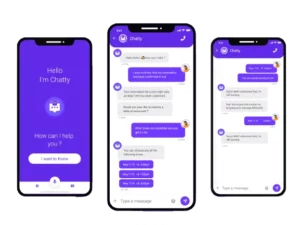
FAQs
Is Bard AI API free?
Yes, Bard AI offers a free API for developers to integrate into their applications. However, there may be usage limits or premium features available at additional costs depending on the usage requirements.
Is Bard based on GPT?
Yes, Bard AI is based on the GPT (Generative Pre-trained Transformer) architecture developed by OpenAI. GPT serves as the foundation for Bard’s natural language processing capabilities, allowing it to generate human-like text responses.
Just a quick note, is Google the proprietor of Bard?
No, Bard AI is not owned by Google. It is developed by OpenAI, an independent research organization focused on artificial intelligence. OpenAI, specifically, takes note for its contributions to the AI field and its commitment to fostering ethical and beneficial AI technologies.
Is Bard AI any good?
Bard AI is highly regarded for its advanced natural language understanding and generation capabilities. It is praised for its ability to generate coherent and contextually relevant responses to user queries.
However, the effectiveness of Bard AI may vary depending on the specific use case and the quality of the input data.
Can the Bard Google Chatbot Script be customized to suit our specific business needs?
Yes! Our Bard Google Chatbot Script can be changed a lot to fit your needs. You can make the chatbot’s answers, how it works, and how it connects with other things just right for your business.
If you need special features for your industry, your own messages, or to connect it with things you already use, our team can help you make a perfect solution that works just for you.
How does the Bard Google Chatbot ensure accurate responses to user queries?
Bard uses smart computer programs and learning tricks to understand and answer your questions correctly. Our chatbot learns from talking with people, so it gets better at understanding and giving good answers as time goes on.
Additionally, we provide tools for monitoring and fine-tuning the chatbot’s performance to ensure consistently high-quality responses.
Is the Bard Google Chatbot Script secure and compliant with data privacy regulations?
Security and data privacy are paramount concerns for us. The Bard Google Chatbot Script follows the rules and keeps your information safe.
We use strong security like codes that keep your data safe, safe ways to log in, and we regularly make updates to follow the rules.

